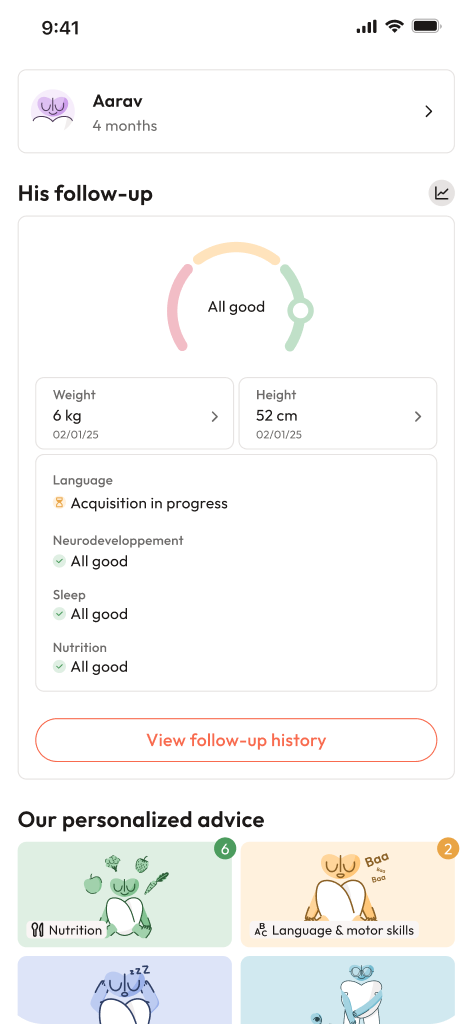Picture this: anticipation crackles in the air, swirling with questions. Should you rush to determine baby’s gender so you can finally paint the nursery walls sky blue or gentle peach, or is the surprise more tempting than any early reveal? Relatives may nudge. Friends send old-fashioned predictions, your phone buzzes with “boy or girl?” texts, and sometimes—amplifying it all—medical or practical concerns demand clarity. What’s the right move? Here’s a journey through science, options, feelings, ethics, and practical wisdom, crafted for families wanting clarity around this milestone. If certainty, preparation, or reassurance are on your mind, rest assured: navigating the path to determine baby’s gender need not be a leap into the unknown.
Explore the purpose behind wanting to know (or to wait), the timing for accurate answers week-by-week, medical angles, reliable methods, accuracy stats, genetic insight, privacy insights, the colourful jumble of home tests and folk wisdom, and a calm perspective if results are unexpected. Let’s dive in to unravel everything families wonder about when they consider how best to determine baby’s gender.
Why families make different choices: medical, personal, and emotional reasons
Why might you feel this urge to determine baby’s gender as soon as possible? Or, conversely, resist the pressure to find out? For some, medical history weaves its thread—think genetic conditions linked to sex chromosomes (like X-linked disorders) or ambiguous screening signals on early tests, leading doctors to suggest a diagnostic path. In these cases, knowing is one facet of a broader genetic health assessment.
For most, though, the urge is heart-driven and practical. Visualizing the child in your arms, picking out adorable clothes, giving a sibling a name to whisper—these small acts give the future a shape. Others simply relish the surprise at birth, treating each scan as a story unfolding rather than a spoiler.
Each path is legitimate. The essential question: what matters most to you and your family? Determining baby’s gender can be about peace of mind, planning, or simply respecting your own sense of timing.
When and how to determine baby’s gender: timing, accuracy, what to expect
The timeline isn’t set in stone; answers shift with gestational age and device sophistication. Hungry for precision? Here’s a week-by-week breakdown:
- 6–8 weeks: No technique will work—external genitals haven’t appeared.
- 9–11 weeks: Noninvasive prenatal testing (NIPT), a blood test scanning for Y-chromosome DNA, becomes possible. Lab timing and fetal DNA fraction influence accuracy—a low fragment ratio may mean waiting or repeating.
- 11–14 weeks: Ultrasound “nub theory” sometimes piques curiosity, guessing sex by the angle of the fetal genital tubercle. It’s far from guaranteed.
- 16–20 weeks: Ultrasound grows more reliable; when baby sweeps into the right pose, 95%+ accuracy is routine.
- 18–22 weeks: This is the gold standard window for the anatomy scan. Clear pelvic snapshots can clarify nearly every doubt—unless baby has legs entwined or the placenta sits anteriorly.
- Later: Inconclusive earlier? A repeat scan, timed right, often resolves the question.
Accuracy—one word, many shades. What does it mean to “be sure”? Typical numbers:
- Anatomy scan (18–22 weeks): 95–98% confidence when views are ideal.
- NIPT blood test: 95–99% in optimal conditions—remember, it reflects genetic material from the placenta, which nearly always matches the foetus itself.
- Nub theory: Around 70–85% in expert hands, but much less dependable when conditions are not ideal.
Errors? Not rare: early gestation, low fetal fraction (think higher BMI), twins or multiples, fetal position, or placenta placement can muddle results. Even a tiny sample contamination in at-home blood tests may tip results astray.
Scientific pathways: ultrasound, NIPT, and diagnostic tests
Ultrasound: deciphering secrets with sound waves
Ultrasound sits at the heart of routine prenatal care. Using high-frequency sound waves, sonographers reconstruct real-time images of the foetus. In early pregnancy, a vaginal probe may be used; later on, a tummy scan is enough.
- First trimester: Some clinicians estimate sex using nub theory, judging the angle of the genital tubercle. It’s exciting, but not definitive.
- Second trimester: Anatomy scan, concentrating on pelvic views, distinguishes between labia/clitoris and penis/scrotum. Non-visual barriers—legs crossed, hands or cord between thighs, low fluid, anterior placenta—can, however, obscure clarity.
- Main aim: Remember, ultrasound is a health check first, sex determination secondary.
Practical insight: sipping water pre-scan can help if told to arrive with a full bladder (sometimes better imaging). Soft clothing, past reports, and a dose of patience: if baby is playful and keeps shifting, a short walk or wait often helps. If the scan is inconclusive, a follow-up can be arranged—there’s no shame in needing a second look.
NIPT (Noninvasive Prenatal Testing): advanced genetic screening
When you determine baby’s gender with NIPT, you’re looking for cell-free foetal DNA floating in the mother’s blood. If there’s Y-chromosome DNA, it’s almost certainly a boy; absence suggests a girl.
- Timing: Possible from 9–10 weeks, but best reliability comes when the fetal fraction surpasses 4–5%.
- Accuracy and challenges: Superb accuracy (>95%), yet occasionally “no call” results pop up—usually due to insufficient fetal DNA, higher maternal weight, early sampling, or twins. A redraw later usually helps.
- Caveats: Genetic differences between placenta and baby are rare but possible (mosaicism, vanishing twin phenomena, maternal chromosomal traits).
Heads-up: NIPT doesn’t just report sex, but broad chromosomal health. Be emotionally ready for all outcomes before opening that report.
Diagnostic certainty: CVS and amniocentesis
For some, medical reasons prompt a more direct approach:
- CVS (Chorionic Villus Sampling): At 10–13 weeks, a placental sample is collected. With >99% certainty, chromosomal sex and many genetic markers can be pinpointed.
- Amniocentesis: From 15 weeks onward, amniotic fluid is sampled—again, >99% accuracy and broad genetic insight. Risks exist, such as miscarriage (quoted around 0.1–0.3%).
- Indications: Only suggested when family history, suspicious screenings, or diagnostic clarity are vital.
IVF & Preimplantation Genetic Testing
For families using IVF, preimplantation genetic testing (PGT) lets clinicians identify sex chromosomes before transfer. Accuracy is excellent (>98%), though not every clinic supports elective sex selection.
Home kits, fun theories, and medical advice
The market brims with options claiming to determine baby’s gender: finger-prick blood kits, urine dye kits, ancient charts predicting outcomes by mum’s age, bump size, or food cravings.
- Early blood spot tests: Conceptually similar to lab NIPT, but home handling, shipping delays, and contamination make accuracy variable. Always seek lab accreditation, fetal fraction reporting, and robust privacy commitments. Treat results as preliminary—confirmation via clinical ultrasound is ideal.
- Urine-based or “entertainment” kits: No reliable evidence underpins these. Enjoy them for fun, but don’t base critical decisions on their readings.
- Old wives’ tales: Baking soda reactions, Chinese calendars, bump shape, heart rate, Ramzi theory—all unreliable. Use them for friendly chatter, never as fact.
Decision matrix: balancing methods, timing, cost, and safety
Let’s bring this together with an at-a-glance guide:
| Method | Earliest Use | Accuracy | Risks / Notes |
|————–|——————|————–|————————————-|
| NIPT | 9–10 weeks | 95–99%+ | Screening test, needs confirmation |
| Nub theory/scan| 11–14 weeks | 70–85% | Not always conclusive |
| CVS | 10–13 weeks | >99% | Invasive; medical indication needed |
| Amnio | 15–20+ weeks | >99% | Invasive; reserved for necessity |
| Ultrasound (genital view)| 18–22 weeks | 95–98% | Routine, safe, but not always possible |
Cost varies by country, hospital, and individual insurance. Routine scans may be bundled into general prenatal care, with NIPT and invasive tests reserved for clinical indications. At-home kits might appeal for their low entry cost—but consider follow-up needs if results are unclear.
Biological and technical influences: why “uncertain results” happen
Determining baby’s gender isn’t always seamless. Multiple practical and biological elements impact certainty:
- Gestational age: Early on, both physical and genetic clues are harder to read.
- Fetal position/movement: If baby nestles with knees tucked, visibility can be lost.
- Fluid, placenta, maternal build: Low fluid, a front-placed placenta, or higher BMI may obscure the picture—sometimes patience is the only answer.
- Lab, sample factors: Delays, improper storage, or technical issues can degrade NIPT samples.
- Twins/multiples: Double the fun, double the diagnostic challenge—some labs decline reporting sex altogether for twins.
- Genetic mosaicism: Sometimes, the genetic pattern in the placenta differs subtly from the foetus itself, causing surprises in NIPT results.
Interpreting accuracy and next steps for families
Let’s talk science, simply. Three concepts ease the emotional roller-coaster:
- Sensitivity: How often does the test find Y-chromosome DNA when it’s present?
- Specificity: How often does the test avoid claiming it’s there when it’s not?
- Predictive value: How likely is a “boy” (or “girl”) result to match your baby once they’re born?
Rarely, tests clash. Sometimes NIPT says one thing, ultrasound another. If so, check:
- When the test was done—too early, and results may flip.
- If the fetal fraction in NIPT was high enough (less DNA, less certainty).
- Whether a follow-up scan, ideally with an experienced sonographer, is possible.
- For health needs, invasive genetic testing after clear, compassionate counselling.
Some questions may wait for time to answer. Rather than repeat tests rapidly, trusting the 18–22-week scan for clarity may help lessen stress.
Special cases: twins, chromosome differences, and DSDs
Twins? Dizygotic (fraternal) can differ in sex; monozygotic (identical) almost never do. NIPT interpretation gets trickier, as does ultrasound labelling—accuracy demands higher vigilance.
Some babies arrive with differences in sex development (DSDs), or conditions like Turner, Klinefelter, or mosaic sexual chromosomes. In such cases, early genetic counselling, sensitive care, and multi-disciplinary management support every family to make wise, gentle decisions.
Ethical, legal, and privacy considerations
Laws and clinic policies regarding elective sex selection aren’t universal—many places, for ethical reasons, forbid using sex information alone for pregnancy decisions. Whatever your reasons, compassionate, non-directive counselling—explaining options without pressure—remains best practice.
When using early commercial tests, always review:
- Data storage, retention, and whether your information will be shared or sold.
- Whether your physical sample is destroyed after testing—ask for written policies.
- Where lab servers are hosted—understand which country’s data privacy protection applies.
- Prefer secure patient portals, and decide in advance who receives your results.
Preparing for discussions and next steps with your healthcare provider
Bring questions. Here are some to consider:
- Which method would you suggest for us right now—NIPT, anatomy scan, or another?
- Can you explain the expected accuracy and limits for my situation? What happens if the test is inconclusive?
- How does your lab handle no-call NIPT results?
- What are your centre’s specific safety figures for CVS or amniocentesis?
- If one test says “boy” and another “girl”, what’s the plan?
For all appointments, bring old records, dress comfortably, and if needed, arrange reliable transportation (especially if an invasive procedure is planned). Clarify if you want to know the sex up front—accidental disclosure is uncommon, but clear communication helps.
Life after knowing: practical, emotional, and family advice
Big news in hand, pause before making it public. Some find sharing in a quiet moment soothing, others organize family events, or keep info private for a season. What if others respond with coolness or unwanted enthusiasm? Try lines like, “We’re just happy everything is healthy,” or, “This is the baby we’ve been waiting for.”
Planning nursery, names, or wardrobes? Many opt for a neutral approach, layering in personal touches as they wish. A blend of tradition and practicality is possible—don’t feel obliged to pick one path.
If the result jars with your hopes, acknowledge any pangs gently. Discuss openly with loved ones or your clinician—building attachment is a journey. A child’s identity soon takes shape far beyond chromosomes or anatomy.
Sharing the news safely and inclusively
Inclusive language soothes tension. Try, “The sex is [boy/girl],” and remember, chromosomal sex, physical anatomy, and eventual gender identity are distinct aspects. Medical privacy matters: decide what you’ll share before broadening the circle. For celebrations, steer clear of fire, explosions, or risky stunts—joy needn’t carry danger.
Calm checklist for clarity and peace
Tick off as needed:
If planning and curiosity drive you:
- [ ] Schedule the 18–22-week anatomy scan.
- [ ] Decide if you’d like sex disclosed during scan—communicate this clearly.
- [ ] For early at-home kits, check lab certification, data handling, and plan for confirmatory ultrasound.
If medical needs arise:
- [ ] Discuss NIPT or diagnostic test timeline with your doctor, especially if there’s family history.
- [ ] If any test is unusual, seek genetic counselling.
For all families:
- [ ] Collect prior reports, write down your questions, and ask about test result communication.
- [ ] Learn lab data retention, sharing, and destruction strategies.
- [ ] Envision in advance how, when, and with whom you wish to share news—or savour the surprise at birth.
Key Takeaways
- Most families successfully determine baby’s gender via a midpregnancy ultrasound (18–22 weeks) or a laboratory NIPT—each offering high reliability when conditions are ideal.
- Factors affecting certainty include gestational age, position, placenta, maternal BMI, amniotic fluid, fibroids, and sample quality.
- Elective NIPT testing often includes a broader chromosomal check—be prepared for additional findings.
- Home tests and old wives’ tales bring entertainment, not assurance—confirmation through medical-grade ultrasound remains best for peace of mind.
- Uncertain or conflicting results? Repeat testing at optimal windows, request targeted scans, and seek professional guidance before major decisions.
- Legal and ethical landscapes vary—many places ban elective sex selection or using sex information to guide major choices.
- Reviewing privacy and data handling of labs—especially commercial ones—gives confidence in protecting family information.
- Each family’s reasoning is valid. Beyond all, support, kindness, and wise counsel are lifelong companions. For ongoing advice, tailored health questionnaires, or questions beyond determine baby’s gender, download the application Heloa—a compact ally for growing families.
Questions Parents Ask
How much do gender-determination tests typically cost, and will insurance cover them?
Prices can swing a lot based on method and where one resides. Standard ultrasound checks for determine baby’s gender at the mid-pregnancy scan usually get bundled with regular prenatal visits, so there may not be extra fees except the consultation. NIPT can come with a hefty tag, often in the higher hundreds to a thousand (currency depending on provider and test panel). At-home kits draw attention with low upfront costs, but keep in mind, follow-up with ultrasound or medical NIPT adds to the bill if you want to be sure. Diagnostic approaches (CVS or amniocentesis) tend to cost more due to lab and procedure charges. Insurance will generally support medically driven testing (e.g., genetic risk indicators), but not always when the only goal is to determine baby’s gender. If unsure, directly connect with your insurer, arm yourself with doctor’s notes and lab codes, and discuss less pricey options with your doctor if finances are a worry.
How long does it take to get results from NIPT, ultrasound, at-home kits, or invasive tests?
Timeline depends on method. With ultrasound, if the view is good, immediate feedback is standard—sometimes extra review by a senior expert will mean a brief wait. NIPT takes anywhere from three to ten business days post-sample receipt, with speedy packages sometimes at a premium. If your sample needs a redraw due to “no-call,” tack on extra days. Home kits rely on shipping and partner labs—anywhere from a couple of days to a week or two. Amniocentesis and CVS can return basic results in one to two weeks; more complex genetic panels may take up to three weeks. If timing impacts medical decision-making, tell your provider up front—they’ll steer you to the fastest, dependable route.
Are at-home blood kits as reliable as clinical NIPT? What should parents check before buying one?
At-home kits seem attractive, but their reliability is a patchwork. While the principle—spotting Y-chromosome DNA—is the same as clinical NIPT, accuracy lives in the details: was the sample collected, shipped, and processed under strict quality norms? Some kits fail to report fetal fraction; others fall short on lab validation and certification. Before investing, check for clear lab credentials (look for certifications like CLIA, ISO), transparent data practices, a clear “what if the sample’s not good enough?” plan, and validation reports. Reliable kits will always recommend confirmatory testing through a doctor or certified ultrasound before major life choices. Treat early at-home results as fun or curiosity; trust clinical confirmation for decisions impacting you and your baby.

Further reading :









